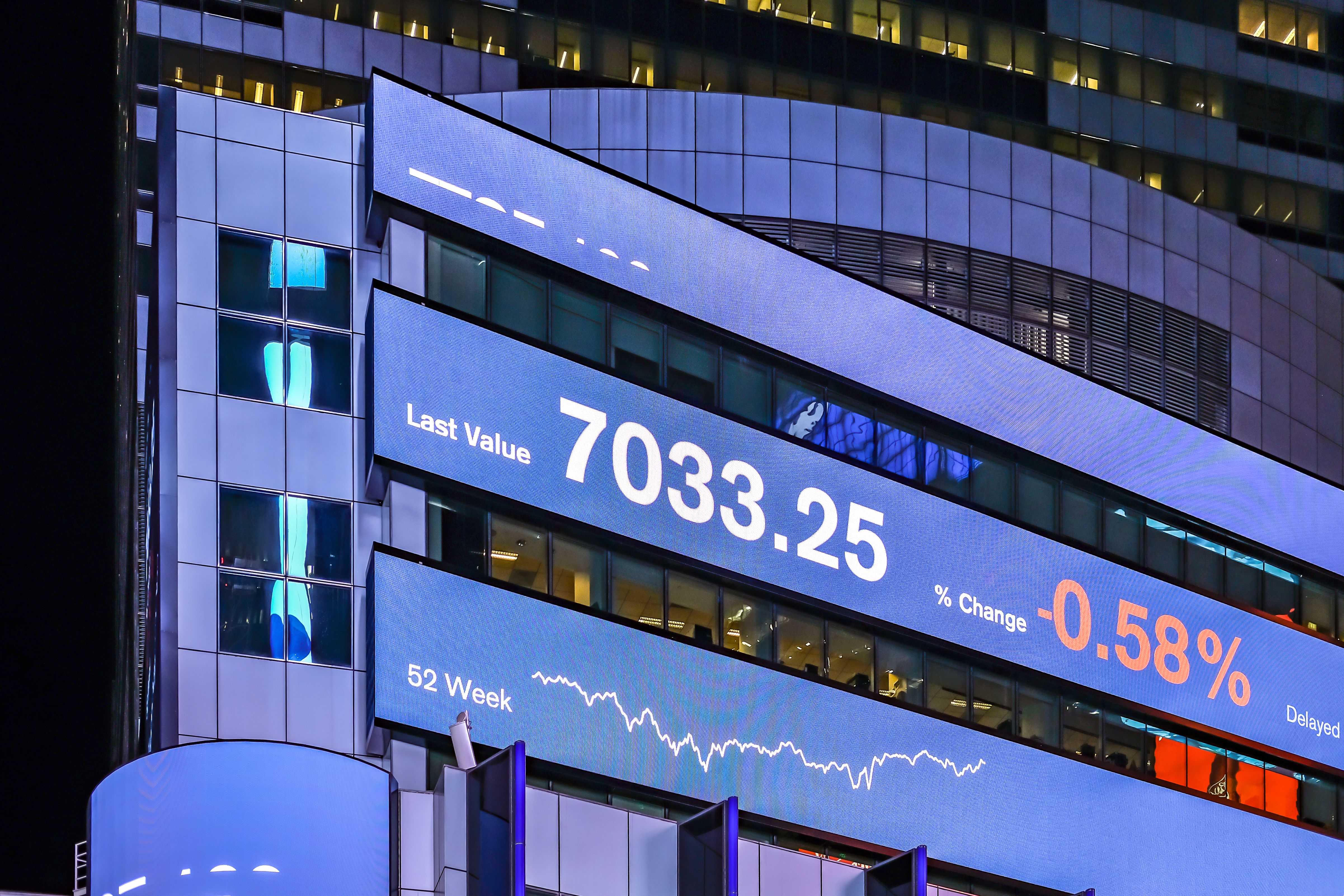Technology
Texas Wealth Firm Exits Goldman’s High-Yield Nasdaq ETF After Strong Run
On Thursday, B&D White Capital Company, LLC, disclosed it sold out its entire stake in the Goldman Sachs Nasdaq-100 Premium Income ETF (GPIQ +0.81%) for an estimated $17.5 million.
What Happened
According to a filing disclosed to the Securities and Exchange Commission on Thursday, Texas-based B&D White Capital Company, which does business as Coyle Capital, sold its entire holding of 351,699 shares in the Goldman Sachs Nasdaq-100 Premium Income ETF (GPIQ +0.81%). The estimated transaction value based on average quarterly pricing was $17.5 million. The fund reported no remaining shares in GPIQ as of September 30.
What Else to Know
Top holdings after the filing:
NASDAQ:AMZN: $136 million (17.4% of AUM)NYSEMKT:AVUS: $60.2 million (7.7% of AUM)NYSEMKT:ILCG: $50.7 million (6.5% of AUM)NYSEMKT:VTI: $38.5 million (4.9% of AUM)NYSEMKT:IWF: $35.2 million (4.5% of AUM)
As of Friday's market close, GPIQ shares were priced at $53.32, up 10.5% over the past year.
ETF Overview
ETF Snapshot
GPIQ invests at least 80% of its assets in equity securities from the Nasdaq-100 Index.The fund's underlying holdings seek to maintain style, capitalization, and industry characteristics similar to the Nasdaq-100, while maintaining a non-diversified portfolio structure.It delivers attractive distributions to investors through a high dividend yield.
The Goldman Sachs Nasdaq-100 Premium Income ETF (GPIQ) offers investors targeted exposure to the Nasdaq-100 Index. With a dividend yield of 9.6%, GPIQ provides scale and liquidity for institutional portfolios. The fund delivers attractive distributions to investors.
Foolish Take
B&D White Capital’s full exit from the Goldman Sachs Nasdaq-100 Premium Income ETF seemingly signals a decisive shift away from high-yield, options-based equity strategies that dominated flows in early 2025. The move came alongside a similar liquidation of its stake in GPIX, Goldman’s S&P 500 Premium Income ETF, suggesting a broader pullback from covered-call funds after strong short-term gains.
Coyle’s disciplined, evidence-based philosophy emphasizes market efficiency and long-term diversification, discouraging market timing or yield chasing. Given GPIQ’s 9.6% trailing distribution rate, the exit likely reflects portfolio rebalancing rather than a bearish view on the ETF itself. GPIQ remains a relatively new fund—launched in October 2023—with assets nearing $1.9 billion and exposure to top Nasdaq names like NVIDIA, Microsoft, and Apple.
For long-term investors, the shift highlights a key takeaway from Coyle’s playbook: favoring steady global diversification and avoiding overreliance on income-driven products that may lag in rising markets.
ETF (Exchange-Traded Fund): An investment fund traded on stock exchanges, holding a basket of assets like stocks or bonds.
13F reportable assets: Assets that institutional investment managers must disclose quarterly to the SEC if above a certain threshold.
AUM (Assets Under Management): The total market value of investments managed by a fund or firm on behalf of clients.
Dividend yield: The annual dividend income expressed as a percentage of the investment's current price.
Premium Income ETF: An ETF strategy focused on generating income by selling options or similar techniques, often boosting yield.
Fully exited: When an investor sells all shares of a particular investment, leaving no remaining position.
Non-diversified portfolio: A portfolio that invests in fewer securities, increasing exposure to specific sectors or companies.
Underlying holdings: The individual securities or assets that make up a fund or ETF.
Distribution: Payments made by a fund to investors, typically from income or capital gains.
TTM: The 12-month period ending with the most recent quarterly report.
Institutional portfolios: Investment portfolios managed on behalf of organizations such as pension funds, endowments, or large asset managers.
Nasdaq-100 Index: A stock market index of 100 of the largest non-financial companies listed on the Nasdaq exchange.
On Thursday, B&D White Capital Company, LLC, disclosed it sold out its entire stake in the Goldman Sachs Nasdaq-100 Premium Income ETF (GPIQ +0.81%) for an estimated $17.5 million.
What Happened
According to a filing disclosed to the Securities and Exchange Commission on Thursday, Texas-based B&D White Capital Company, which does business as Coyle Capital, sold its entire holding of 351,699 shares in the Goldman Sachs Nasdaq-100 Premium Income ETF (GPIQ +0.81%). The estimated transaction value based on average quarterly pricing was $17.5 million. The fund reported no remaining shares in GPIQ as of September 30.
What Else to Know
Top holdings after the filing:
NASDAQ:AMZN: $136 million (17.4% of AUM)NYSEMKT:AVUS: $60.2 million (7.7% of AUM)NYSEMKT:ILCG: $50.7 million (6.5% of AUM)NYSEMKT:VTI: $38.5 million (4.9% of AUM)NYSEMKT:IWF: $35.2 million (4.5% of AUM)
As of Friday's market close, GPIQ shares were priced at $53.32, up 10.5% over the past year.
ETF Overview
ETF Snapshot
GPIQ invests at least 80% of its assets in equity securities from the Nasdaq-100 Index.The fund's underlying holdings seek to maintain style, capitalization, and industry characteristics similar to the Nasdaq-100, while maintaining a non-diversified portfolio structure.It delivers attractive distributions to investors through a high dividend yield.
The Goldman Sachs Nasdaq-100 Premium Income ETF (GPIQ) offers investors targeted exposure to the Nasdaq-100 Index. With a dividend yield of 9.6%, GPIQ provides scale and liquidity for institutional portfolios. The fund delivers attractive distributions to investors.
Foolish Take
B&D White Capital’s full exit from the Goldman Sachs Nasdaq-100 Premium Income ETF seemingly signals a decisive shift away from high-yield, options-based equity strategies that dominated flows in early 2025. The move came alongside a similar liquidation of its stake in GPIX, Goldman’s S&P 500 Premium Income ETF, suggesting a broader pullback from covered-call funds after strong short-term gains.
Coyle’s disciplined, evidence-based philosophy emphasizes market efficiency and long-term diversification, discouraging market timing or yield chasing. Given GPIQ’s 9.6% trailing distribution rate, the exit likely reflects portfolio rebalancing rather than a bearish view on the ETF itself. GPIQ remains a relatively new fund—launched in October 2023—with assets nearing $1.9 billion and exposure to top Nasdaq names like NVIDIA, Microsoft, and Apple.
For long-term investors, the shift highlights a key takeaway from Coyle’s playbook: favoring steady global diversification and avoiding overreliance on income-driven products that may lag in rising markets.
ETF (Exchange-Traded Fund): An investment fund traded on stock exchanges, holding a basket of assets like stocks or bonds.
13F reportable assets: Assets that institutional investment managers must disclose quarterly to the SEC if above a certain threshold.
AUM (Assets Under Management): The total market value of investments managed by a fund or firm on behalf of clients.
Dividend yield: The annual dividend income expressed as a percentage of the investment's current price.
Premium Income ETF: An ETF strategy focused on generating income by selling options or similar techniques, often boosting yield.
Fully exited: When an investor sells all shares of a particular investment, leaving no remaining position.
Non-diversified portfolio: A portfolio that invests in fewer securities, increasing exposure to specific sectors or companies.
Underlying holdings: The individual securities or assets that make up a fund or ETF.
Distribution: Payments made by a fund to investors, typically from income or capital gains.
TTM: The 12-month period ending with the most recent quarterly report.
Institutional portfolios: Investment portfolios managed on behalf of organizations such as pension funds, endowments, or large asset managers.
Nasdaq-100 Index: A stock market index of 100 of the largest non-financial companies listed on the Nasdaq exchange.




